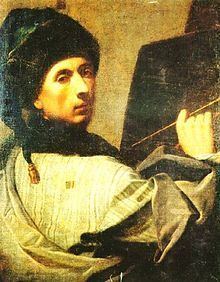Nationality Italian | Known for Painter Periods Baroque, Rococo | |
 | ||
Notable work Apotheosis of St. DominicApotheosis of PalermoAllegory of Political VirtuesGlory of the Princes of ResuttanaGlory of St. Basil Died 13 October 1769, Palermo, Italy People also search for Francesco Sozzi, Sebastiano Conca, Corrado Giaquinto | ||
Vito D'Anna (14 October 1718 – 13 October 1769) was an Italian painter, considered the most prominent painter of Palermitan rococo and one of the most important artists of Sicily.
Contents
Biography
He was the father of Alessandro D'Anna, the brother-in-law of Francesco Sozzi, and the son-in-law of Olivio Sozzi.
He studied under Pietro Paolo Vasta from 1736 to 1744, when he returned to Palermo. In Acireale, he had painted Portrait of the Provost Gambino, (the work is found in the sacristy of the Cathedral).
In Palermo, Vito married the daughter of the Catanese painter Olivio Sozzi. Sozzi helped arrange D'Anna to work with the circle of an aged Corrado Giaquinto in Rome.
D'Anna frescoed a number of palaces, and the churches of San Sebastiano, San Matteo and del Salvatore in Palermo. Among his works were: his fresco of the Madonna dei Raccomandati in the church of the same name, his Nativity in the church della Grotta, Self-portrait in the Galleria Zelantea. His nephew, Giuseppe Patania, was also a painter.
